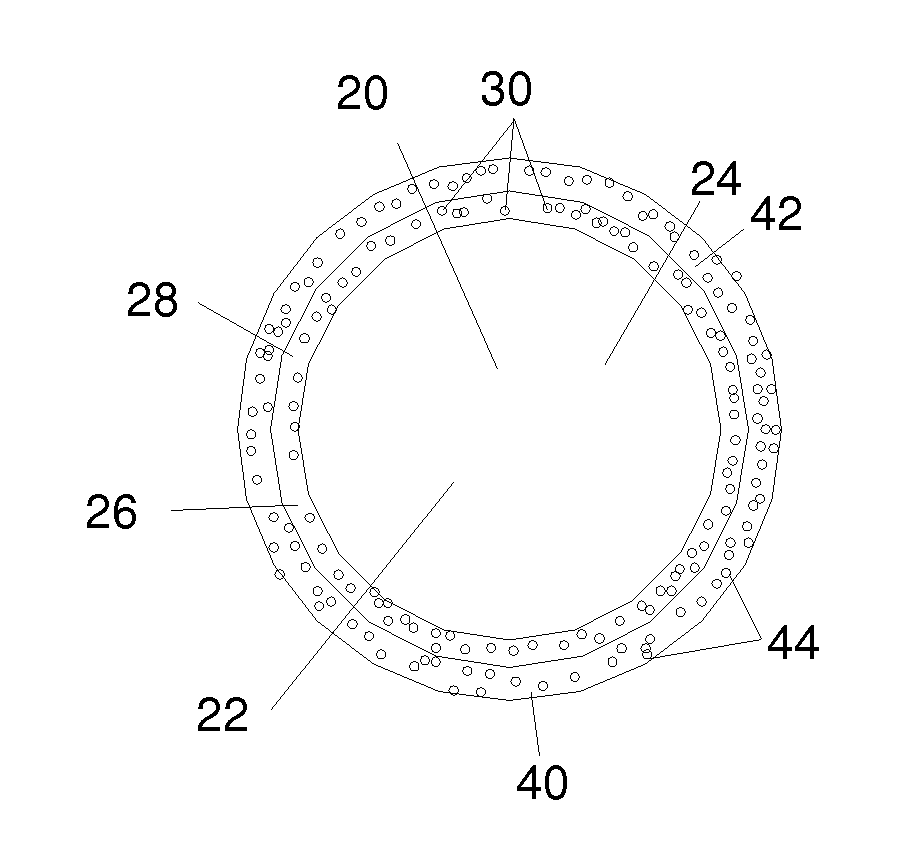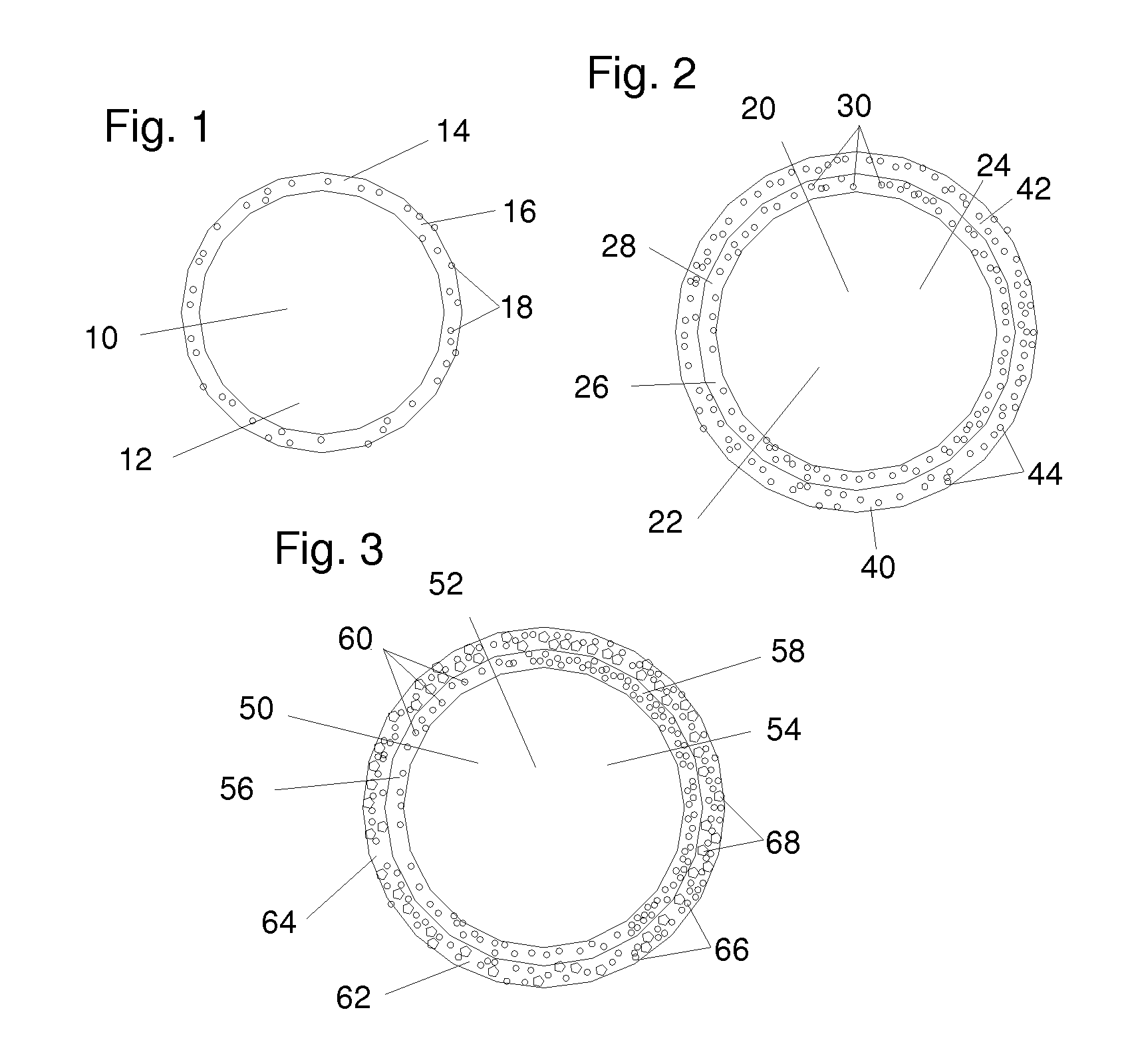Coating compositions for roofing granules, dark colored roofing granules with increased solar heat reflectance, solar heat-reflective shingles, and process for producing the same
- Summary
- Abstract
- Description
- Claims
- Application Information
AI Technical Summary
Benefits of technology
Problems solved by technology
Method used
Image
Examples
example 1
[0075]Inert mineral rocks with sizes between U.S. # 10 U.S. mesh and # 40 U.S. mesh (commercially available from CertainTeed Corp., Piedmont, Mo.) are coated by coating comprising 9.5 g sodium silicate binder (Grade 40 from, Occidental Chemical Company, Dallas, Tex.), aluminum fluoride (available from Aldrich Chemical), sodium silicofluoride (available from Aldrich Chemical), kaolin clay (available from Unimin Corp.), and Portland cement as latent heat reactants in various combinations. The details of the compositions are listed in Table 1. The coating composition is first mixed in a beaker using a propeller mixer at 300 rpm and then is blended with 25.0 g of the mineral particles until a uniform mixture is achieved. The coated granules are then spread out on wax paper and dried in air. The granules are then placed in a crucible and heat treated in a temperature-controlled furnace set at 260 degrees C. (500 degrees F.) or 538 degrees C. (1000 degrees F.) for 3 hours. The granules ar...
examples 2-4
[0076]Black colored roofing granules were prepared by coating 1000 g of inert mineral rocks suitable for shingle applications (commercially available from CertainTeed Corp., Piedmont, Mo.), and a silicate coating composition comprising 37.5 g of sodium silicate (grade 40, Occidental Chemical Co., Dallas, Tex.), 2.812 g of aluminum fluoride, 0.814 g of sodium silicofluoride, 0.75 g of Portland cement, 0.6 g of green pigment (RD-1563 from Ferro Corp., Cleveland, Ohio), 0.46 g of ultramarine blue pigment (FP4O, also from Ferro Corp.), 4.4 g of black-pigment (10202 black, also from Ferro Corp.), and 7 g of water. The coating composition was first mixed in a beaker with a mixer at 300 rpm and was then blended with the mineral particles in a plastic bottle until a uniform mixture was attained. The coated granules were then dried by a fluidized bed dryer, and were then heat treated at 496 degrees C. (925 degrees F.) in a rotary dryer to cure the coating composition. The resultant granules ...
PUM
| Property | Measurement | Unit |
|---|---|---|
| Fraction | aaaaa | aaaaa |
| Percent by mass | aaaaa | aaaaa |
| Percent by mass | aaaaa | aaaaa |
Abstract
Description
Claims
Application Information
 Login to View More
Login to View More - R&D
- Intellectual Property
- Life Sciences
- Materials
- Tech Scout
- Unparalleled Data Quality
- Higher Quality Content
- 60% Fewer Hallucinations
Browse by: Latest US Patents, China's latest patents, Technical Efficacy Thesaurus, Application Domain, Technology Topic, Popular Technical Reports.
© 2025 PatSnap. All rights reserved.Legal|Privacy policy|Modern Slavery Act Transparency Statement|Sitemap|About US| Contact US: help@patsnap.com


